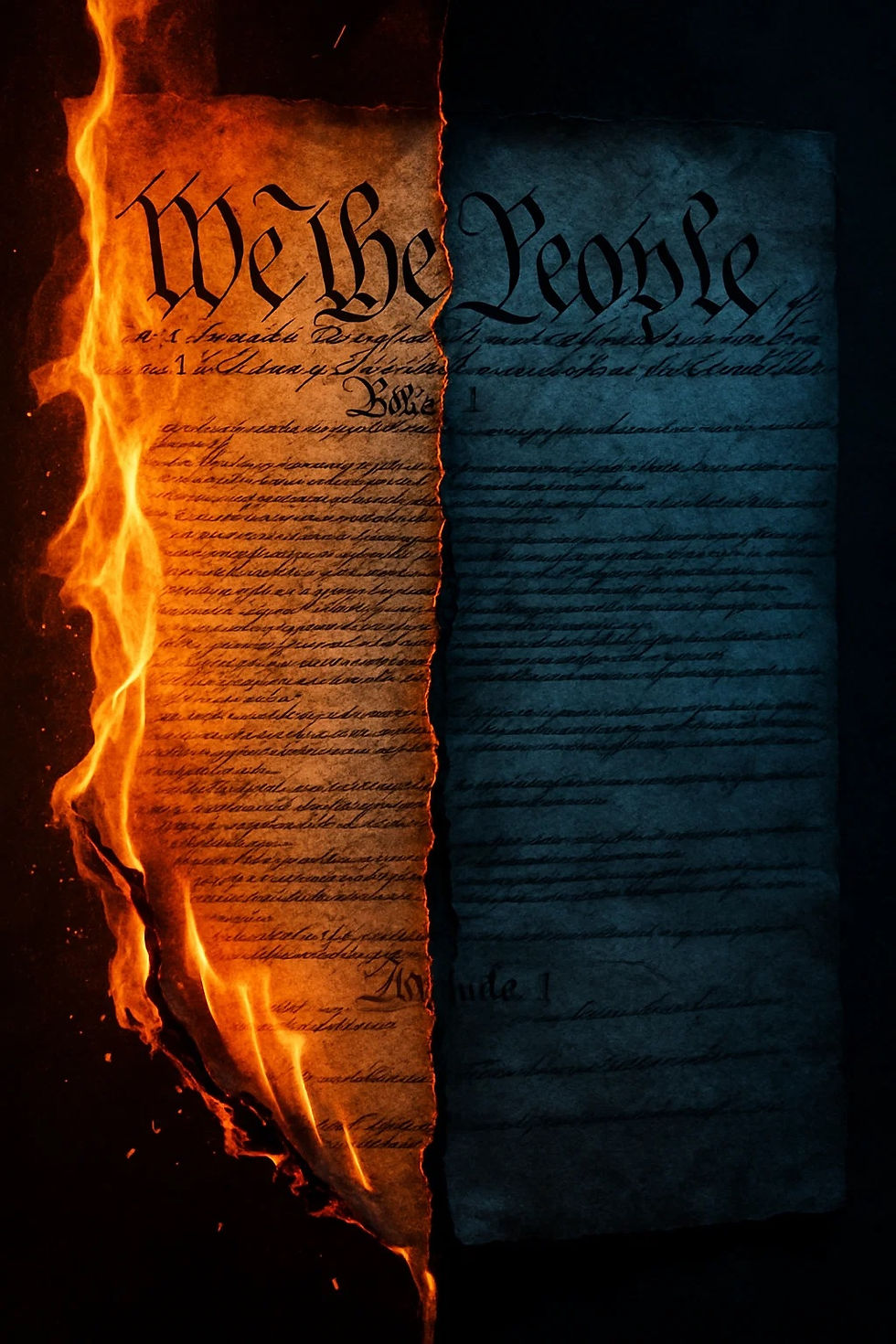Dearborn Heights’ Arabic Police Patch: Alienating the Majority?
- Lynn Matthews
- Sep 5
- 4 min read
In Dearborn Heights, Michigan, a new police patch featuring Arabic script has sparked outrage among many of the city’s residents. With only 39% of the population identifying as Arab or of Middle Eastern and North African (MENA) descent, the patch’s design is seen by some as a slap in the face to the 61% who are not. Coming on the heels of a 2024 “Death to America” chant at a Dearborn rally and under the shadow of Dearborn’s Muslim mayor, Abdullah Hammoud, the patch feels like a provocative overreach to many non-MENA residents. When the Dearborn Heights Police Department disabled comments on their social media post unveiling the patch, it only confirmed suspicions of a misstep. In a city striving for unity, why is a symbol meant to celebrate diversity alienating so many?

The Patch and Its Backdrop
The Dearborn Heights Police Department’s 2025 patch, designed by Officer Emily Murdoch, includes “Dearborn Heights Police” in English and Arabic, reflecting the city’s 39% Arab population, largely of Lebanese, Iraqi, or Yemeni descent. City officials hailed it as a nod to diversity, a first for any U.S. police department. But for the majority—82% White, 9% Black, and others, including Hispanic and Asian residents—the Arabic script feels like a spotlight on one group at the expense of everyone else. This perception is amplified by recent events in nearby Dearborn, where a 2024 Al Quds Committee rally saw protesters chant “Death to America” and “Death to Israel.” Dearborn’s Mayor Hammoud, who is Arab American and Muslim, condemned the chants as “unacceptable,” but the incident left a bitter taste, especially when contrasted with the 2025 arrest of Anthony Young, a non-MENA resident, for a vague Facebook post.
Why It Feels Like Alienation
For non-MENA residents, the patch isn’t just a symbol—it’s a signal that their identities don’t matter as much. The 61% of Dearborn Heights’ population who aren’t Arab, including White, Black, Hispanic, and Asian communities, see Arabic script on a police uniform and wonder why their cultures aren’t represented. Posts on X capture this frustration, with users like @JohnIsa69517391 writing on X, "Dearborn Heights Police Dept is the first Police dept to wear an Arabic patch. This crap will spread beyond the Wayne County border. One thing these corrupt cops and radicals in Wayne County will deal with is the numerous Militia groups who stand firmly against this evil rot."
The Dearborn Heights city council’s decisions are seen by many as divisive, allowing “Death to America” chants without consequence while a Garden City resident is arrested for a social media outburst.
The association of Arabic with Islam, and Islam with Sharia, fuels fears—however misguided—that the patch signals a creeping cultural shift. While Arabic is a language, not a religion, and Sharia has no foothold in U.S. governance, these distinctions get lost in a climate of distrust. With only 1% of the U.S. population being Muslim and no significant push for Sharia nationally, the fear may be overblown, but it’s real to those who feel sidelined.
The “Death to America” Shadow
The 2024 Dearborn rally, where chants of “Death to America” went unpunished under free speech protections, looms large. Legally, such speech is protected unless it incites imminent violence, but to non-MENA residents, it feels threatening. When Dearborn Heights, with its 39% Arab population, unveils a patch with Arabic script, it’s seen as tone-deaf at best, divisive at worst.
The disabled comments on the police department’s social media post about the patch—likely a reaction to anticipated backlash—only deepen the perception that officials know they’ve misjudged the mood. In a city where non-MENA residents are the majority, this move risks alienating those who already feel their voices are drowned out.
Leadership and Perception
Dearborn’s Mayor Hammoud, while not leading Dearborn Heights (where Bill Bazzi is mayor), casts a long shadow as a prominent Arab American and Muslim figure. His condemnation of the 2024 chants didn’t quell fears, especially when cases like Anthony Young’s arrest for a social media post suggest selective enforcement. For non-MENA residents, the patch symbolizes a broader trend: a leadership and cultural focus that seems to prioritize one community over others.
The 39% Arab population is significant, but the 61% non-MENA majority feels overlooked, and the patch’s Arabic script becomes a flashpoint for those frustrations.
Fixing the Divide
If Dearborn Heights wants to avoid further alienating its non-MENA residents, it needs to act fast. Open town halls where all communities—White, Black, Hispanic, Asian, and others—can voice their concerns are a start. Adding symbols to the police department’s imagery that reflect the city’s full diversity, not just one group, could help. Transparency about the patch’s intent and a willingness to engage critics, rather than silencing them by disabling comments, is crucial. Without these steps, the patch risks becoming a symbol of division, not unity, in a city where 61% of residents feel left out.
Dearborn Heights’ Arabic-English police patch aimed to celebrate its 39% Arab population, but has alienated the 61% who aren’t of MENA descent. In the wake of “Death to America” chants and perceived double standards under leaders like Mayor Hammoud, the patch feels like a misstep that prioritizes one group over the majority. By shutting down social media comments, the police department signaled they knew it was controversial—yet they pressed forward. In a diverse city, symbols must unite, not divide. Dearborn Heights must listen to its non-MENA residents or risk deepening a growing rift.




Comments